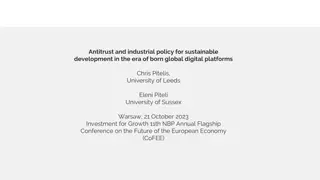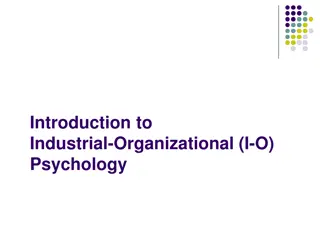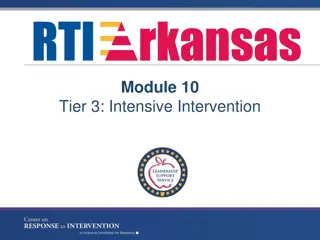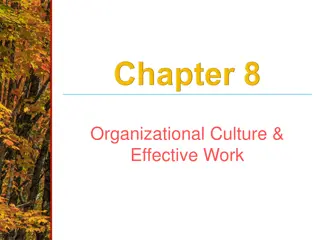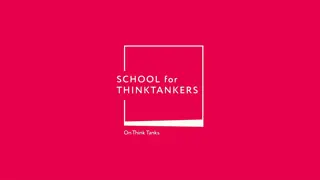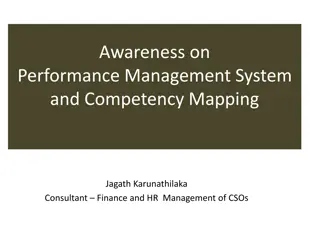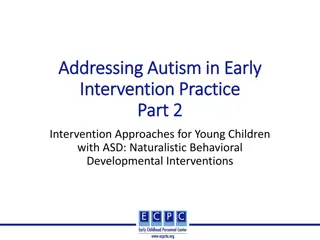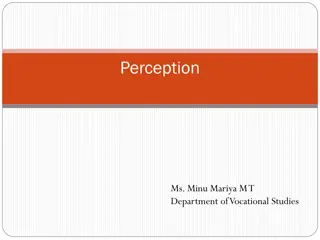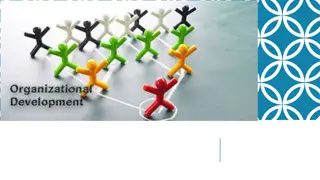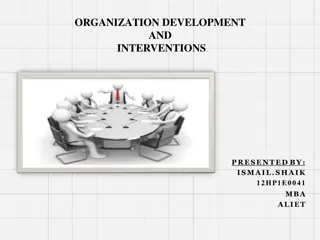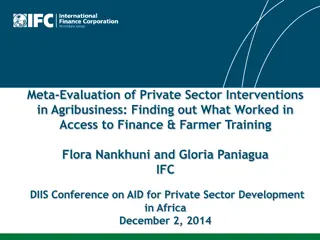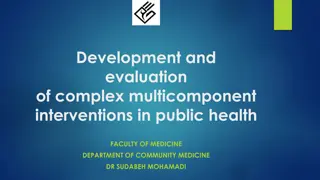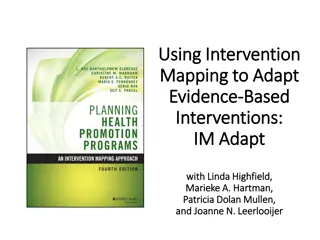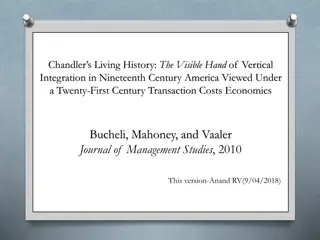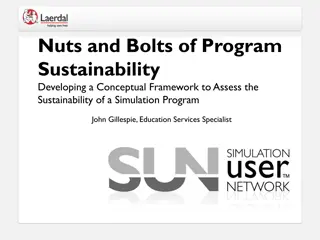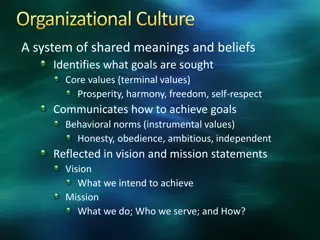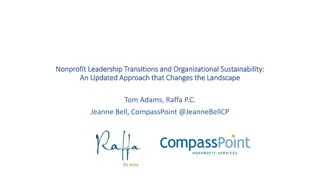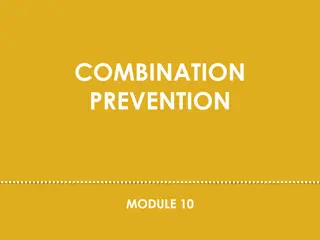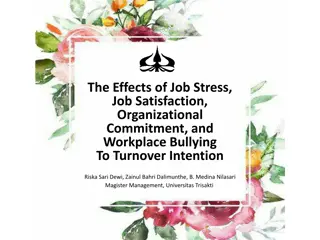Understanding Organizational Development Interventions
Organizational Development (OD) Interventions play a crucial role in enhancing organizational functioning and aiding managers in navigating team dynamics. These interventions encompass various techniques, including behavioral and non-behavioral approaches such as Sensitivity Training, Transactional Analysis, and Role Playing. By focusing on improving individual and group behavior, OD interventions aim to foster a healthy organizational culture and achieve strategic goals.
Download Presentation

Please find below an Image/Link to download the presentation.
The content on the website is provided AS IS for your information and personal use only. It may not be sold, licensed, or shared on other websites without obtaining consent from the author. Download presentation by click this link. If you encounter any issues during the download, it is possible that the publisher has removed the file from their server.
E N D
Presentation Transcript
UNIT- 5 OD INTERVENTIONS Prepared by Dr. Monika Soni
Organizational Development (OD) Interventions are structured program designed to solve a problem, thus enabling an organization to achieve the goal. These intervention activities are designed to improve the organization's functioning and enable managers and leaders to better manage their team and organization cultures.
TYPES OF OD INTERVENTIONS BEHAVIORAL NON BEHAVIORAL/ STRUCTURAL MISCELLANEOUS Sensitivity Training Transactional Analysis Role Playing Career Planning Survey Feedback Process Consultation Grid OD Third Party Peace Making Activities Rensis Likert s 4 System of Management Work- Redesign MBO Quality Circle
BEHAVIORAL NTERVENTIONS These techniques are designed to affect the behavior of individuals and the group. 1) Sensitivity Training-: The purpose of sensitivity training sessions or T-groups (T for training) is to change the behavior of people through unstructured group interaction. Members (ten to fifteen individuals) are brought together in a free and open environment, away from work places, in which participants discuss themselves freely, aided by a facilitator. No formal agenda is provided. The objectives of the T-groups are to provide the participants with increased awareness of their own behavior and how others perceive the, greater sensitivity to the behavior of others, and increased understanding of group processes. 2) Transactional Analysis-: TA "is a theory of personality and a systematic psychotherapy for personal growth and personal change." As a theory of personality, TA describes how people are structured psychologically. It uses what is perhaps its best known model, the ego-state (Parent-Adult-Child) model, to do this. The same model helps explain how people function and express their personality in their behaviour
As Berne set up his psychology, there are four life positions that a person can hold, and holding a particular psychological position has profound implications for how an individual operationalizes his or her life. The positions are stated as: I'm OK and you are OK. This is the healthiest position about life and it means that I feel good about myself and that I feel good about others and their competence. I'm OK and you are not OK. In this position I feel good about myself but I see others as damaged or less than and it is usually not healthy. I'm not OK and you are OK. In this position the person sees him/herself as the weak partner in relationships as the others in life are definitely better than the self. The person who holds this position will unconsciously accept abuse as OK. I'm not OK and you are not OK. This is the worst position to be in as it means that I believe that I am in a terrible state and the rest of the world is as bad. Consequently, there is no hope for any ultimate supports. It is a theory of communication that can be extended to the analysis of systems and organisation It offers a theory for child development by explaining how our adult patterns of life originated in childhood. This explanation is based on the idea of a "Life (or Childhood) Script": the assumption that we continue to re-play childhood strategies, even when this results in pain or defeat. Thus it claims to offer a theory of psychopathology.
3) Role playing-: It may be described as a technique of creating a life situation, usually one involving conflict between people, and then having persons in group play the parts or roles of specific personalities. In industry, it is used primarily as a technique of or modifying attitudes and interpersonal skills. For instance, two trainees may play the roles of a superior and a subordinate to discuss the latter s grievances. The purpose of role playing is to aid trainees to understand certain business problems and to enable observers to evaluate reactions to them. Role playing is generally used for human relations and sales training. This technique makes trainees self-conscious and imaginative and analytical of their own behavior.
4) Career Planning Career planning is the self-evaluation & planning done by a person to have a strong career path. Career planning process in the continuous reiterative process of understanding oneself, setting career goals, revising skills and searching for the right career options. Career planning is a step-wise process which enables an individual to focus on where to want to be in life professionally. With the short-term goal and the long-term goals in place, career planning can help to plan their journey in their professional life. Self-assessment is necessary to understand one s capabilities and drawbacks. The various career options should be explored in detail to find a fit between one s abilities and the opportunities provided by a career option. It involves continuous learning and improvement to build and growth in the chosen career path. A good career planning helps a person grow in life in their professional career, which also help them grow personally.
STRUCTURAL INTERVENTIONS- Refer Chapter 12 (French and Bell) 1) Work Redesign-: Work design is a broad term meaning the process of defining tasks and jobs to achieve both organisational and employee goals, it must, therefore, take into account the nature of the business (organisational interest), the organisational structure, the information flow and decision process, the differences among employees, and the reward system. Within the board scope of work, design is the design of individual jobs, that is, job design. Job analysis is the process of obtaining information about jobs. Job redesign makes use of job analysis to redefine a job in terms of tasks, behaviours, education, skills, relationships, and responsibilities required.
2) Quality of Work Life-: Quality of work life (QWL) refers to the favorableness or unfavorableness of a job environment for the people working in an organisation. QWL is a process of work organisations which enable its members at all levels to actively; participate in shaping the organizations environment, methods and outcomes. This value based process is aimed towards meeting the twin goals of enhanced effectiveness of organisations and improved quality of life at work for employees. In recent years there has been increasing concern for QWL due to the following factors: increase in education level and consequently job aspirations of employees; association of workers; significance of human resource management; widespread industrial unrest; behavior, etc. growing of knowledge in human 3) MBO-: Managing by objectives is a dynamic system which integrated the company s need to achieve its goals for profit and growth with the manager s need to contribute and develop himself. Management by objectives (MBO) is a technique designed to increase the precision of the planning process at the organisational level. To reduce the gap between employee and organisational goals. MBO encourages performance appraisal through a process of shared goal setting and evaluation.
4) Quality Circle-: Conceptually Quality Circles can be described as a small group of employees of the same work area, doing similar work that meets voluntarily and regularly to identify, analyse and resolve work related problems. This small group with every member of the circle participating to the full carries on the activities, utilising problem solving techniques to achieve control or improvement in the work area and also help self and mutual development in the process. Quality circles built mutual trust and create greater understanding between the management and the workers. Cooperation and not confrontation is the key element in its operation. Quality Circles aims at building people, developing them, arousing genuine interest and dedication to their work to improve quality, productivity, cost reduction etc.
Miscellaneous Intervention 1) SURVEY FEEDBACK- (Refer Chapter 11) The study of Survey Feedback played an important role in formation and history of Organizational Development (OD). Developed as an organization wide intervention by Mann and his associates (1957-1965), survey feedback is a process in which organizational members complete questionnaires on various organizational issues, receive feedback on the results, then take appropriate actions to address the critical needs and concerns. Survey feedback method usually proceeds with sequential activities involving data collection, feedback of information, developing action plans based on feedback, and follow up. a. Data Collection: The first step in survey feedback is data collection usually by a consultant based on a structured questionnaire. The questionnaire may include different aspects of organizational functions like leadership managerial support, managerial goal emphasis, managerial work facilitation, peer support, peer goal emphasis, peer work facilitation, and peer interaction facilitation, organizational climate communication with the company, motivation, decision-making, control within the company co-ordination between departments, and general management, and satisfaction satisfaction with the company, satisfaction with the supervisor, satisfaction with the job, satisfaction with the pay, and satisfaction with the work group. The questionnaire is administered personally either by the members of consulting firm or by organization s personnel. After the questionnaires are completed, data are classified, tabulated, and analysis is made to arrive at some meaningful conclusions.
b) Feedback of Information: After the data are analyzed, feedback is given to the persons who have participated in the fulfilling up of questionnaire. The feedback may be given either orally or in a written form. In oral system of feedback, it is provided through group discussion or problem-solving sessions conducted by the consultant. Alternatively, feedback may be given in the form of a written summary of findings. Whatever the method of giving feedback is adopted, it should be constructive and suggestive, rather, threatening and emotion-hurting as survey feedback is aimed at identifying weaknesses which must be overcome through follow-up actions and not the fault-finding technique for criticism. c) Follow-up Action: Survey feedback programme is not meaningful unless some follow-up action is taken based on the data collected. One such follow-up action may be to advise the participants to develop their own action plans to overcome the problems revealed through a feedback or as is more commonly the case, follow-up action may be in the form of developing some specific OD interventions particularly process consultation and team- building, by the consultant.
2) Process Consultation (Refer Chapter -9 for details) Process consultation includes a set of activities on the part of a consultant which help the client to perceive, understand, and act upon process events which occur in the client senvironment . Process consultation assumes that an organisation s effectiveness depends on how well its people relate to one another. An organisation s problems, therefore, often can be traced to the breakdown of critical human processes at key places. consultation concentrates on certain specific areas as communication, functional roles of members, group problem-solving and decision-making; group norms and growth, leadership and authority, and intergroup cooperation and competition.
3) Grid OD -: (Refer Chapter -11 for details) Grid training is basically based on grid organization development developed by Blake and Mouton. It is a comprehensive and systematic Organizational Development is a programme which aims at individuals, groups, and the organization as a whole. Grid training utilizes a considerable number of instruments, enabling individuals and groups to assess their own strengths and weaknesses; focuses on skills, knowledge, and processes necessary for effectiveness at the individual, group, inter-group, and total organizational levels. Its specific objectives are as follows: To study the organization as an interactive system and apply techniques of analysis in diagnosing its problems. To understand the importance and rationale of systematic change. To evaluate the styles of leadership and techniques of participation to produce desirable results. Process of Grid Training The basic content of grid organization development is managerial grid as discussed. The whole orientation is to develop managerial style through the application of behavioral science knowledge. The grid organization development consists of six phases.
a. Managerial Grid: It covers various aspects of assessing managerial styles, problem-solving, communication skills, and teamwork. The individuals try to learn to become managers by practice. b. Teamwork Development: The focus in this stage is to develop teamwork by analyzing team culture, traditions, and alike. The skills relating to planning, objective-setting, and problem-solving are also developed. c. Inter-group Development: At this phase, the focus is on inter-group behaviour and relations. The thrust is on moving groups from conflict to co-operation. Each group separately analyses the ideal inter-group relations. Action steps to move towards the ideal are developed and assigned to individuals who may be engaged in building co-operative inter-group relationships. d. Developing Ideal Strategic Corporate Model: At this stage, the focus shifts to the total organization and to develop skills necessary for organizational excellence. The action is designed to identify the characteristics of the ideal organization. The members of the organization are trained for achieving this excellence. e. Implementing the Ideal Strategic Model: The implementation stage includes the building of the organization on the model of ideal organization on the basis of concepts developed under stage 4. Each group may be given assignment to evolve strategy for making ideal organization with the help of the consultant. The strategy is then implemented. f. Systematic Critique: In this stage, the various efforts from phase 1 to phase 5 are evaluated and critical analysis is made. The analysis will bring out the shortcomings that may be there. In this light, the various programmes may be redesigned.
4) Third Party Peace Making Activities- (Refer Chapter -10 for details) It is used to a.) Improve inter group relations b) Enhance communications and interactions c) To reduce dysfunctional conflict d) To replace independence with interdependence Used when 2 persons/ groups are in conflict. TPP helps to resolve or control such conflict. Confrontation is very important- that conflict exists. The third party (consultant) must be able to diagnose conflict situations and use confrontation tactics. For better diagnosis it is necessary to know the SOURCES OF CONFLICT A. SUBSTANTIVE CONFLICT- Policies, practices, resources, role conflicts. B. EMOTIONAL CONFLICT Relationship conflict/ negative feelings / resentment. RESOLUTION TECHNIQUES 1. SUBSTANTIVE Problem solving and bargaining. 2. EMOTIONAL Restructuring perceptions and negative feelings
5) Rensis Likert 4 system of Management-: This system wide intervention was designed by Rensis Likert. He identified four systems as follows; - 1) System 1 - exploitative -authoritative (autocratic, top down approach) 2) System 2 - benevolent authoritative (top down, less corrective) 3) System 3 - consultative 4) System 4 - participative (based on participative methods o f decision making & supervision, emphasis on employee invplvefnent & participation.) Likert devised a measurement device i.e. questionnaire to indicate perceptions of employees o f the organization which investigates the system 4 parameters. The results are plotted as profile which illustrates difference that can occur in organization to be least effective whereas system 4 as most effective organization. OD practitioner must divert his/her efforts to move towards system 4 organization which can be done by involvement, participations and empowerment o f employees.




